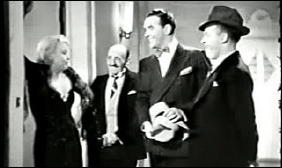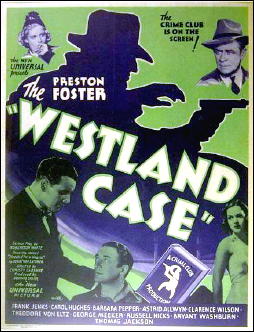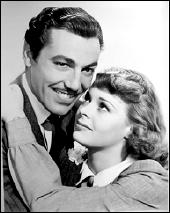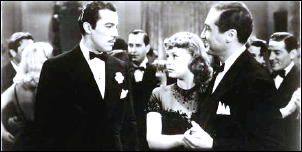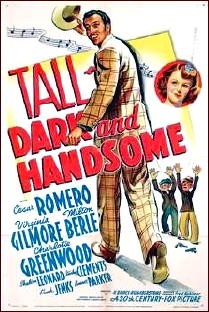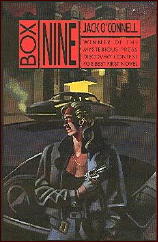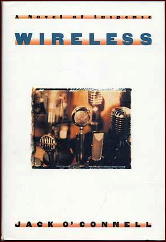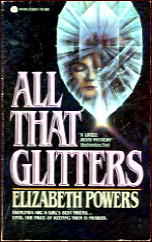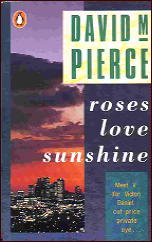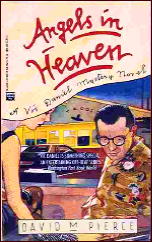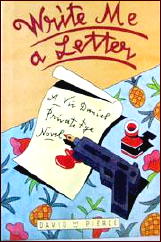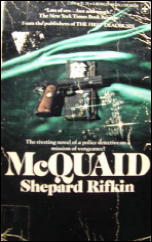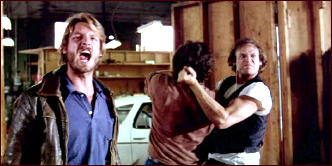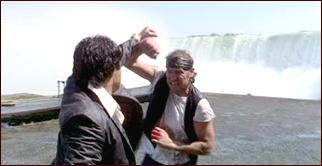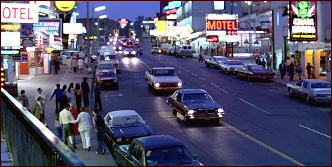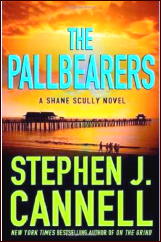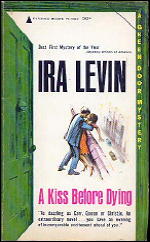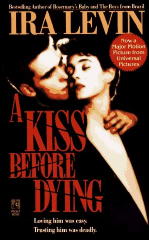FRINGE, THE TV SERIES: A PRIMER
by Michael Shonk

FRINGE. Fox-TV. Bad Robot Production / Warner Brothers. September 9, 2008 through present. Created by J. J. Abrams, Alex Kurtzman and Robert Orci. CAST: Anna Torv as Agent Olivia Dunham, John Noble as Dr. Walter Bishop, and Joshua Jackson as Peter Bishop.
“Neither Here Nor There.” (Fourth Season premiere. September 23, 2011. Friday at 9E/8C.) The teams on the two worlds work together to solve the case of a shapeshifter, and Agent Lincoln Lee (Seth Gabel) joins his world’s team when no one remembers the existence of Peter Bishop. (Summary from TV.com.)
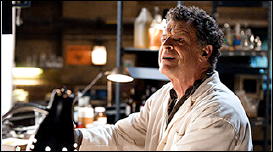
Fringe is a science fiction police procedural series too often ignored by mystery fans. While it is an arc series with occasional stand-alone episodes, the fourth season turns the arc into a circle and offers new viewers the best chance to jump in as everything changes.
The series is focused on three characters, FBI agent Olivia Dunham, Mad Scientist Walter Bishop, and Walter’s genius son Peter. Fringe is a special unit of the FBI that examines mysteries involving strange science.
This means dealing with strange crimes that would test Banacek, such as everyone on board an airborne passenger plane dissolving. While dealing with the strange and gross, Fringe discovered the parallel universe and that the other side was here and for an unknown reason causing trouble.
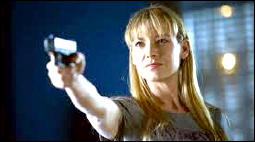
Only Walter had already been to the other universe and has a secret: both Peters were dying. Our universe Peter died, but the other Peter remained alive but with little time left. The other universe Walter (Walternate) discovered a cure but was unaware of it because of the actions of a baldheaded man called an Observer.
Little is known about the Observers except they show up at every important moment of time and have a way of being in Fringe episodes like Hitchcock did in his movies. Walter had been watching, entered the parallel universe, took dying Peter to our universe, saved young boy’s life and kept him.
Well, now Walter had really done it. Both universes began to bump into each other causing death and destruction, with the other side getting the worse of it. The other universe then sent shapeshifters over here to find the mysterious device that would save their universe. Meanwhile, our Fringe division solved the weekly mystery, tracked down the bad guys, and fought off the invasion from the other universe.
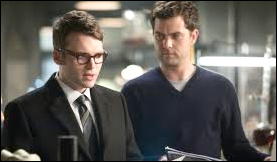
The third season alternated episodes between the two universes where we met our characters alternate universe counterpart (except for now grown up Peter who was from there). We learned the other universe was not evil and only a few had goatees. They, like us, just want to survive.
Things remained strange but our Fringe finally found the final piece of the device to save the universe by taking out the other. The machine would only work with Peter in it, forcing him to chose between the universes.
He then was sent into the future and learned the only way one universe would survive was if both survived, So Peter connected the two universes. Our Fringe and theirs must now work together to save both universes. Peter disappeared and no one noticed. Cut to a group of Observers where we learned Peter was not just gone, he had never existed.
So, got that? Well, don’t worry about it. If Peter never existed, he never died in our universe, he and Olivia never fell in love, he and Fauxlivia (other universe’s Olivia) never had a baby, and Walter never stole Peter from the other universe and the reason for the universes problems change.
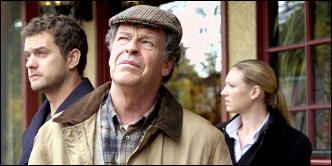
All the characters who had evolved due to Peter’s influence will change to who they would have become if they had never met Peter. Shades of It’s a Wonderful Life without Clarence! This means the writers have a whole lot of explaining to do, and that means you newbies can learn what is going on along with us longtime viewers
If all this is sounding a little Lost to you, there is one major difference. Lost made it up as they went along; Fringe, from the beginning, has had an ending all ready planned. The clues, the strange twists, the answers all will be revealed and make sense (we hope) when the series stops.
If you enjoy mixed genre television, with some science fiction and horror tossed in with your FBI police procedural story, give the series a try. Besides Fringe offers viewers twice the universes of forensics than CBS’s CSI:NY.
